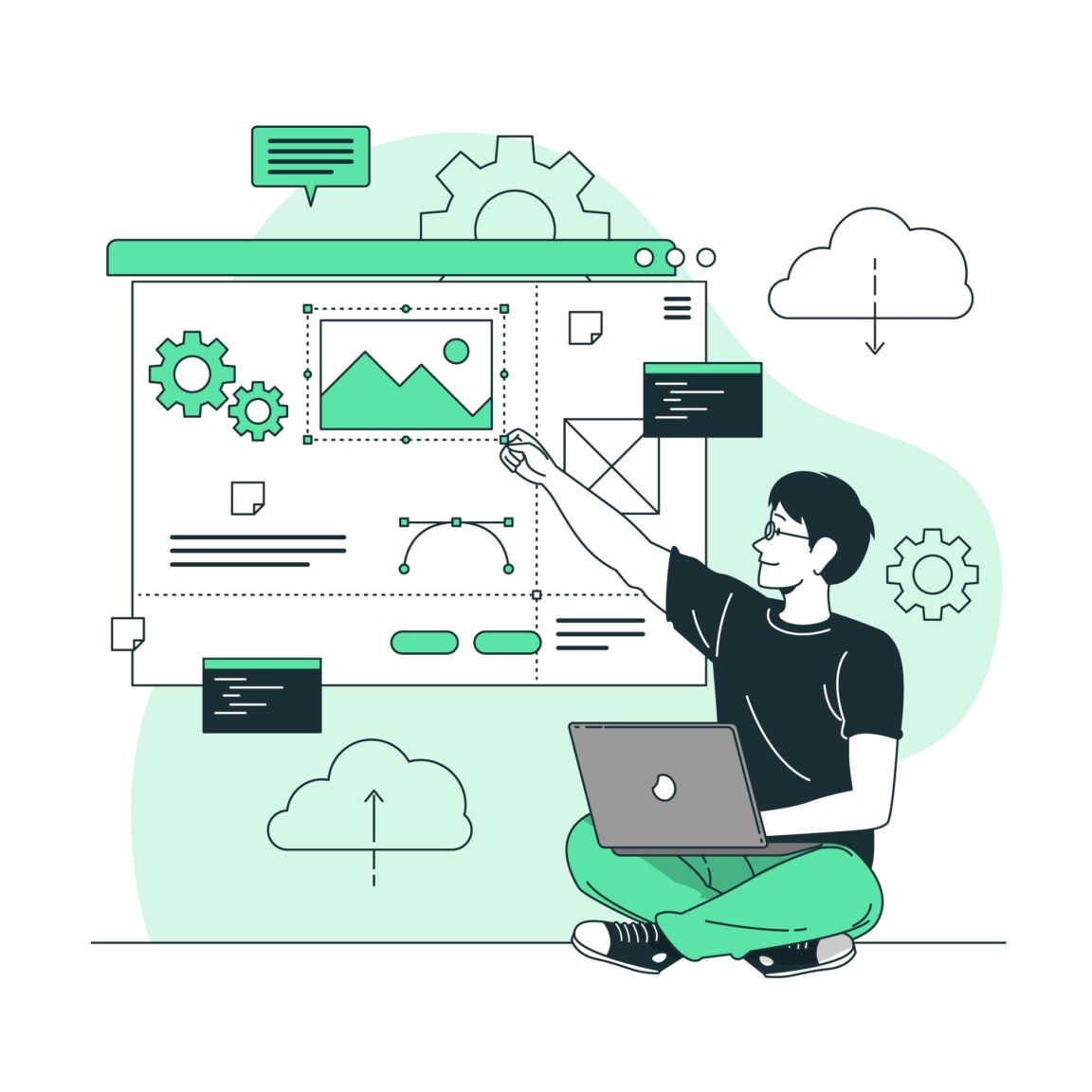In the realm of the internet, where billions of websites coexist, web design stands as the cornerstone of a captivating online presence. Beyond aesthetics, it intertwines creativity, functionality, and user experience, defining the digital footprint of businesses and individuals alike. Let’s delve into the intricate world of web design, exploring its essence, evolution, and the key principles that shape the digital landscapes we navigate daily.
Evolution of Web Design:
The journey of web design is a testament to the evolution of technology and user expectations. From the early days of basic HTML pages to today’s immersive and interactive designs, the metamorphosis has been remarkable.
- HTML to Dynamic Interfaces: Initially, web design was limited by static HTML pages. However, the advent of CSS and JavaScript brought forth dynamic elements, enabling designers to create more engaging interfaces.
- Responsive Design: The surge in mobile usage prompted the need for responsive design. Websites now adapt seamlessly to various screen sizes, ensuring optimal user experience across devices.
- User-Centric Approach: Modern web design revolves around user-centricity. Understanding user behavior, preferences, and psychology is pivotal in crafting intuitive and enjoyable experiences.
Principles of Effective Web Design:
- Minimalistic Design: Simplicity reigns supreme. Clean layouts, ample white space, and a clear visual hierarchy enhance readability and user engagement.
- Intuitive Navigation: Seamless navigation is essential. Users should effortlessly find what they seek, leading to increased user satisfaction and reduced bounce rates.
- Visual Appeal: Aesthetics matter. Thoughtful color schemes, high-quality imagery, and visually appealing typography create a lasting impression.
- Performance Optimization: Speed matters in the digital world. Optimizing loading times and performance ensures user retention and better search engine rankings.
- Accessibility: Web design should be inclusive. Adhering to accessibility standards ensures that everyone, regardless of abilities, can access and navigate websites comfortably.
The Role of UX/UI Design:
User Experience (UX) and User Interface (UI) design are fundamental aspects of web design.
- UX Design: Focuses on enhancing user satisfaction by improving the usability, accessibility, and pleasure provided during interaction with the website.
- UI Design: Deals with the visual elements of the website, ensuring a cohesive and aesthetically pleasing interface that aligns with the brand identity.
Trends Shaping Web Design:
- Dark Mode: Providing an alternative color scheme reduces eye strain and adds a modern touch to websites.
- Micro-Interactions: Small animations and interactive elements enhance user engagement and delight users during their browsing experience.
- Voice User Interface (VUI): With the rise of smart assistants, integrating voice commands into websites is gaining traction.
- 3D Elements and Illustrations: Adding depth and realism through 3D elements and illustrations elevates visual appeal and storytelling.
The Future of Web Design:
The future of web design is an exciting realm shaped by emerging technologies and innovative concepts.
- AI Integration: AI-driven personalization will tailor user experiences based on individual preferences and behavior.
- Augmented Reality (AR) and Virtual Reality (VR): Immersive experiences through AR and VR will revolutionize how users interact with websites.
- Data-Driven Design: Harnessing user data to optimize design elements and personalize content will be a game-changer.
Ongoing Trends in Web Design:
- Mobile-First Design: With mobile browsing surpassing desktop, designing for mobile devices first ensures a seamless experience across all platforms.
- Scrolling Over Clicking: Long-scrolling websites simplify navigation and storytelling, allowing users to absorb information continuously without the need for multiple clicks.
- Typography Emphasis: Unique and bold typography serves as a focal point, adding personality and enhancing readability.
- Artificial Intelligence: AI-powered chatbots and personalization engines enhance user interactions and tailor experiences based on user behavior and preferences.
- Video Content Integration: Video backgrounds and interactive video elements create engaging visual experiences, conveying messages more dynamically than static images or text.
Accessibility and Inclusivity in Web Design:
Ensuring accessibility for all users, regardless of disabilities, remains an integral aspect of modern web design.
- Semantic HTML: Proper use of HTML elements ensures compatibility with screen readers and assistsive technologies.
- Color Contrast and Text Readability: Maintaining adequate color contrast and readable font sizes accommodates users with visual impairments.
- Keyboard Navigation: Designing websites that are navigable via keyboard input ensures accessibility for users who cannot use a mouse.
The Intersection of Design and Development:
Collaboration between designers and developers continues to grow, emphasizing the need for a cohesive workflow and understanding of each other’s roles. Designers’ visions must align with developers’ capabilities to bring seamless and functional designs to life.
Ethics and Responsibility in Web Design:
As technology becomes more pervasive, ethical considerations in web design are gaining prominence. Privacy, data security, and transparency in user data handling are essential ethical principles that designers must prioritize.
Environmental Sustainability in Web Design:
Reducing carbon footprints and optimizing energy consumption through efficient design practices, such as minimalistic coding and server optimization, contribute to a more sustainable web ecosystem.
The Personal Touch in Web Design:
In an era where personal branding and storytelling are vital, web design becomes a canvas for individuals and businesses to showcase their unique identity and connect with their audience on a deeper level. Also, Read about Cricket match ticket information and all other venue related information.
Future Possibilities in Web Design:
The horizon of web design is limitless, with emerging technologies opening doors to new possibilities.
- Immersive Experiences: Integrating sensory elements like touch and smell into web experiences might redefine how users interact with digital content.
- Blockchain Integration: Secure and decentralized web experiences enabled by blockchain technology could revolutionize data privacy and online transactions.
- Internet of Things (IoT) Integration: Websites might seamlessly interact with IoT devices, offering a more interconnected digital experience.
Conclusion:
Web design is a fusion of artistry and functionality, constantly evolving to meet the ever-changing demands of users and technology. From aesthetics to functionality, from user experience to cutting-edge technologies, every facet contributes to crafting compelling digital experiences. As the digital landscape continues to evolve, the essence of web design remains pivotal in shaping how we perceive and interact with the online world.
This post was created with our nice and easy submission form. Create your post!







Comments
0 comments